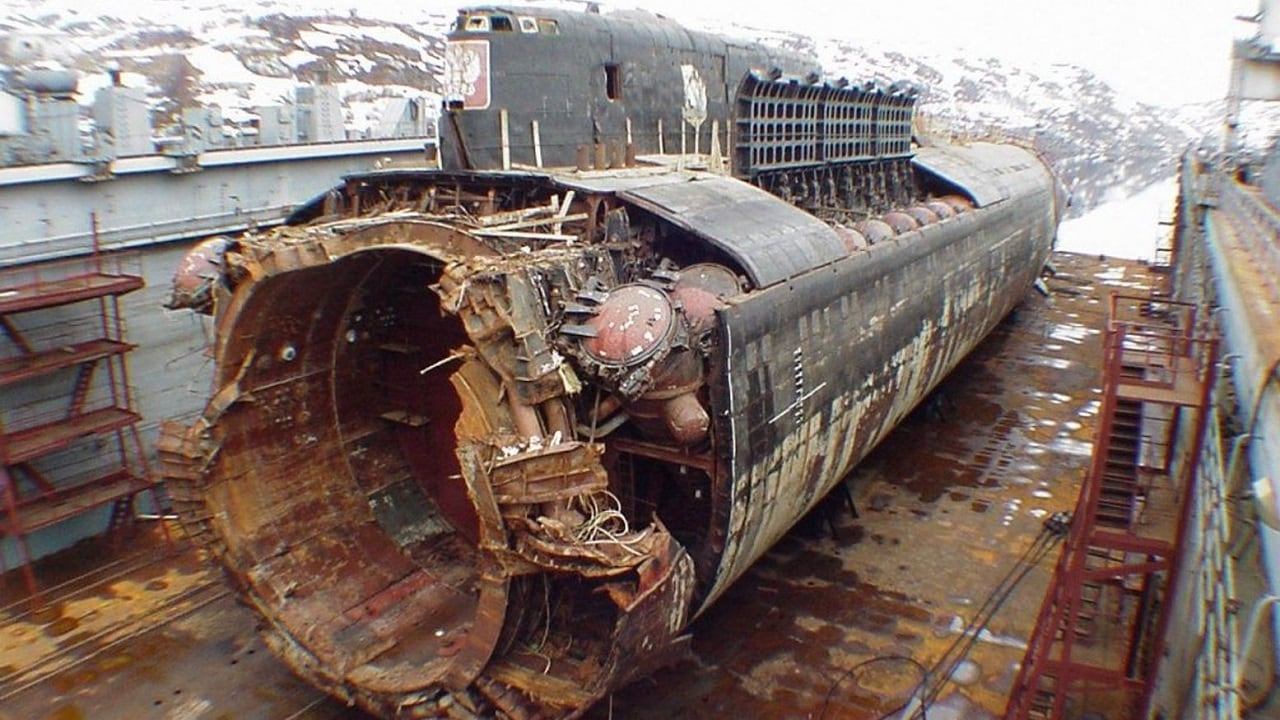More than 20 years ago, one of the world’s largest submarines ever built sank tragically after an unexpected series of explosions ripped through the boat, resulting in the death of all sailors on board.
The Kursk
The Russian K-141 Russian Navy Oscar II, called the Kursk by Russia, was completed just after the collapse of the Soviet Union. The boat sank in the sea during a dummy torpedo-firing training exercise, according to a 2013 report from The Marine Technology News.
According to the report, one of the torpedoes released propellant fluid (hydrogen peroxide) into the fuel system, causing the explosion.
“The HTP (hydrogen peroxide) used as an oxidizer for the torpedo’s engine, escaped into the torpedo casing where it catalytically decomposed on the metals and oxides present there, yielding steam and oxygen. The resulting overpressure ruptured the kerosene fuel tank.”
Sunk By Its Own Armaments
The initial explosion generated a second, larger explosion which was equivalent to 3-7 tons of TNT. The massive secondary explosion “blew large pieces of debris back through the submarine,” according to Marine Technology News, a series of catastrophes ultimately resulted in the death of all 118 sailors on board.
Part of the findings included a tragic yet humanizing story about one sailor who survived the initial explosion and then died in the dark sometime later after having written notes on the bodies of his comrades.
The incident underscores the complexity and fragility associated with attack submarine construction and operation, as successful missions rely upon an interwoven mix of complex technological variables. This includes navigation, propulsion, sensors such as sonar, and weaponry. Any kind of torpedo or undersea-fired weapon requires a small, controlled explosion to propel the weapon into the air from beneath the surface, a circumstance that of course is not without risk.
Given this, it is likely the tragedy of the Kursk informed subsequent Russian engineering and design work on submarines. Consequently, the design and engineering of Russia’s newest Yasen-class submarine, a large guided missile submarine first introduced in 2013, may have been heavily influenced by complications discovered on the Kursk during the investigation.
In particular, an report on the Yasen class from the Federation of American Scientists explains that the submarines have “remote-controlled” torpedoes with a “quick-loading device.” This would suggest that weapons operations were automated, computerized, or at least technically consistent in part to increase safety. Of course, the improved computer-controlled torpedo system also massively increases the speed of attack
“Two torpedo tubes are designed for firing remote-controlled torpedoes with a very high accuracy. The computer-controlled torpedo system is provided with a quick-loading device. It takes only 15 seconds to prepare stand-by torpedo tubes for firing: The first salvo is fired within two minutes and the second within five minutes,” the FAS paper says.
MORE: The F-35 Now Comes in Beast Mode
MORE: Why the U.S. Navy Tried to Sink Their Own Aircraft Carrier
Kris Osborn is the Military Affairs Editor of 19FortyFive and President of Warrior Maven – Center for Military Modernization. Osborn previously served at the Pentagon as a Highly Qualified Expert with the Office of the Assistant Secretary of the Army—Acquisition, Logistics & Technology. Osborn has also worked as an anchor and on-air military specialist at national TV networks. He has appeared as a guest military expert on Fox News, MSNBC, The Military Channel, and The History Channel. He also has a Masters Degree in Comparative Literature from Columbia University

